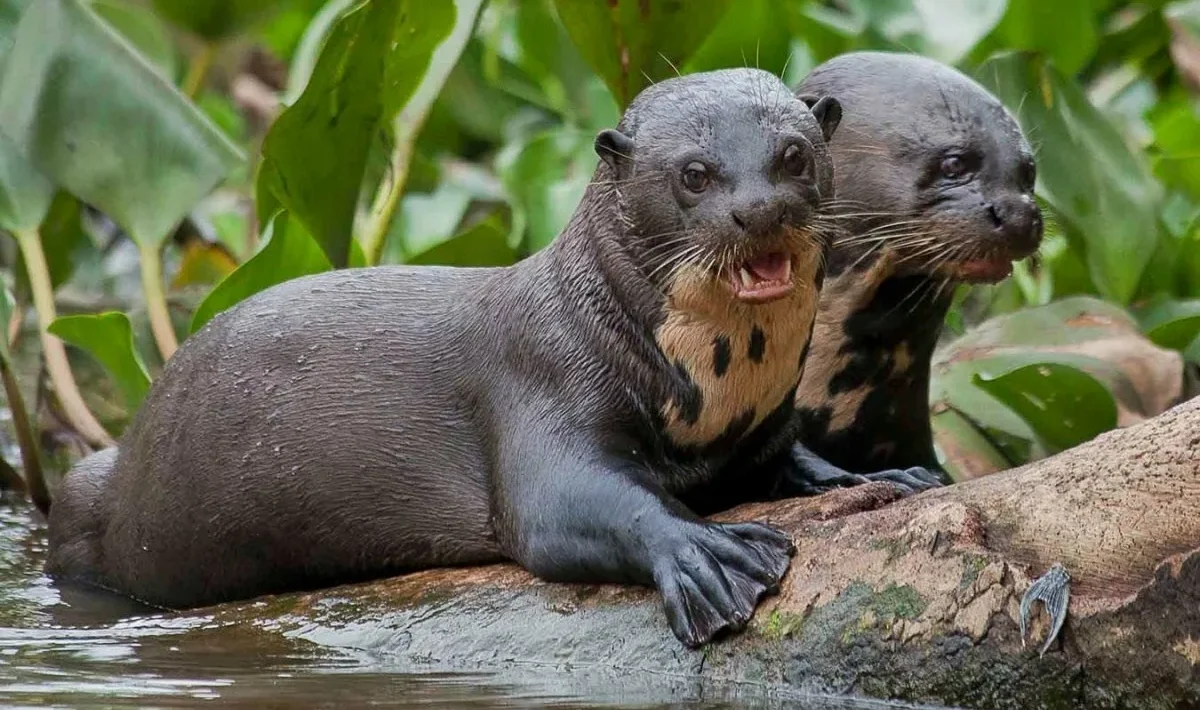This giant animal species had not been seen since 1986 and has reappeared in one of its natural habitats.
Table of Contents
The mammalian predator that was believed to be extinct more than 40 years ago has reappeared in Latin America.
In the world of biology and conservation, few news items are as exciting as the rediscovery of a species that was believed to be extinct. These findings remind us of the vastness and mystery that still surrounds global biodiversity, as well as the importance of conservation efforts.
Recently, a national park in Argentina marked an unprecedented milestone by reintroducing a family of four giant otters to the Iberá National Park in Corrientes. This is an unprecedented event, as it is the first project worldwide to return this species to a habitat from which it had disappeared.Environmental alert: scientists warn of catastrophic rainfall that could repeat the DANA in Spain
It is the best-selling Toyota car in August and has no competition: good, attractive and inexpensive.
The giant otter is considered globally endangered and had been absent from the South American country for four decades. It is a charismatic mammal and the largest of its kind, measuring up to 1.8 metres and weighing over 30 kilograms.
‘The giant otter is the main aquatic predator in these wetlands and its diet, consisting almost entirely of fish, contributes significantly to maintaining healthy ecosystems, especially the water systems it inhabits,’ said Sebastián Di Martino, conservation director at Rewilding Argentina. The last sightings of this species in Argentina were in 1986, and its global conservation status underscores the importance of this introduction.
What are the characteristics and unique features of this animal
The giant river otter (Pteronura brasiliensis), also called the river wolf, is a carnivorous mammal found only in South America. It is the oldest member of the weasel family and one of the largest predators in the Amazon rainforest. This species is recognised by its brown fur with a yellowish-white patch on its throat and by forming groups of between 5 and 10 individuals.
This type of otter spends much of its time in the water, with adaptations that allow it to lead an aquatic lifestyle, such as long whiskers that help it detect fish and long fur that water cannot penetrate. They usually build their nests on the banks of rivers and lakes, where they sleep, give birth and care for their young.
The giant otter is listed as an endangered species because during the 1950s and 1960s it was hunted extensively for its valuable fur, which brought it to the brink of total extinction. Today, the giant otter faces many threats, including habitat loss or degradation, poaching for its fur, and increased exposure to diseases such as canine distemper.
The rediscovery of the giant mammal in the Gran Parque Iberá
The Gran Parque Iberá, in the province of Corrientes, Argentina, offers optimal conditions for otters of this species with more than 756,000 hectares of wetlands, a vast protected area, abundant prey, and no significant threats. This family of four released mammals consists of Nima, a female from Madrid Zoo; her partner Coco, from Givskud Zoo; and their two cubs, born in Iberá in November 2024.

Gustavo Valdés, governor of Corrientes, highlighted the importance of this recovery: ‘The giant otter not only comes to occupy its rightful place in the aquatic ecosystem, but will also attract more tourists eager to observe it, generating more work and development for the people of Corrientes. Iberá is establishing itself as an example in species recovery, nature tourism and genuine local development.’
The release of this family of otters could be the first step towards future progress. According to Rewilding Argentina, the plan is to continue with additional releases in the Iberá and Chaco wetlands to contribute to the global recovery of the species and restore connectivity between isolated otter populations in the heart of the South American region.





